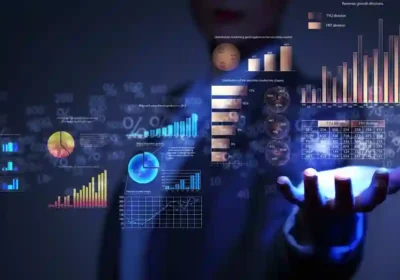Leveraging Economic Models for Macro-Level Analysis in Forex Robot Strategies
In the complex and interconnected world of forex trading, understanding macroeconomic factors and their impact on currency markets is essential for making informed trading decisions. Economic models provide a framework for analyzing the relationships between economic variables, such as interest rates, inflation, GDP growth, and exchange rates, and predicting their future movements. By leveraging economic models for macro-level analysis, forex robot strategies can gain valuable insights into the fundamental drivers of currency markets and develop more robust and adaptive trading strategies. In this article, we explore the significance of economic models in forex trading, their application in forex robot strategies, benefits, challenges, and implications for trading performance.
The Role of Economic Models in Forex Trading
Economic models play a crucial role in forex trading by providing a systematic framework for understanding the dynamics of currency markets. These models help traders analyze the impact of macroeconomic variables and events on exchange rates, identify key drivers of currency movements, and forecast future trends. Some commonly used economic models in forex trading include:
- Purchasing Power Parity (PPP): PPP theory posits that exchange rates between two currencies should equalize the prices of a basket of goods and services in each country, adjusting for differences in inflation rates. Traders use PPP models to assess whether currencies are overvalued or undervalued relative to their purchasing power.
- Interest Rate Parity (IRP): IRP theory suggests that the interest rate differential between two countries should equalize the expected return on investments in their respective currencies. Traders use IRP models to predict exchange rate movements based on differences in interest rates and inflation expectations.
- Asset Pricing Models: Asset pricing models, such as the Capital Asset Pricing Model (CAPM) or the Arbitrage Pricing Theory (APT), analyze the relationship between risk and return in financial markets. Traders use asset pricing models to assess currency risk premia and incorporate risk factors into their trading strategies.
- Monetary Policy Models: Monetary policy models examine the impact of central bank policies, such as interest rate decisions, quantitative easing, and forward guidance, on exchange rates and financial markets. Traders use monetary policy models to anticipate central bank actions and their implications for currency markets.
Application of Economic Models in Forex Robot Strategies
Forex robot strategies can leverage economic models for macro-level analysis in several ways:
- Fundamental Analysis: Forex robots can analyze economic data releases, such as GDP reports, inflation figures, employment data, and central bank statements, using economic models to assess their impact on exchange rates. Algorithms can incorporate fundamental analysis into trading strategies to identify trading opportunities based on economic indicators and events.
- Event-driven Trading: Forex robots can implement event-driven trading strategies that capitalize on market reactions to key economic events and announcements. Algorithms can monitor economic calendars, analyze event forecasts, and execute trades based on the expected impact of economic news on currency markets.
- Risk Management: Forex robots can integrate economic models into risk management frameworks to assess currency risk exposure and hedge against macroeconomic uncertainties. Algorithms can dynamically adjust position sizes, leverage ratios, and hedging strategies based on economic forecasts and scenario analyses.
- Long-term Forecasting: Forex robot can use economic models to generate long-term forecasts of exchange rates and macroeconomic trends. Algorithms can analyze historical data, economic fundamentals, and structural relationships between variables to develop predictive models that guide long-term investment decisions.
- Correlation Analysis: Forex robots can analyze correlations between currency pairs and macroeconomic variables using economic models. Algorithms can identify relationships between economic indicators, such as interest rates, inflation, and trade balances, and currency pairs, helping traders diversify portfolios and manage currency risk effectively.
Benefits of Economic Models in Forex Robot Strategies
Leveraging economic models for macro-level analysis offers several benefits for forex robot strategies:
- Enhanced Predictive Accuracy: Economic models provide a systematic framework for analyzing currency markets and predicting exchange rate movements with greater accuracy. By incorporating economic fundamentals into trading strategies, forex robots can make more informed and reliable predictions.
- Better Risk Management: Economic models help forex robots assess and manage currency risk exposure more effectively. Algorithms can identify macroeconomic factors driving currency movements and adjust risk management parameters accordingly to protect against downside risks.
- Adaptive Strategies: Economic models enable forex robots to adapt to changing market conditions and adjust trading strategies dynamically. Algorithms can incorporate real-time economic data and updates into trading decisions, ensuring flexibility and responsiveness in volatile or uncertain markets.
- Long-term Investment Perspective: Economic models facilitate long-term investment planning and portfolio management in forex trading. Algorithms can analyze structural trends, economic cycles, and policy developments to identify investment opportunities and position portfolios for long-term growth.
- Cross-Asset Integration: Economic models allow forex robots to integrate macroeconomic analysis with other asset classes, such as equities, commodities, and fixed income. Algorithms can analyze intermarket relationships and correlations to optimize portfolio diversification and risk-adjusted returns.
Challenges and Considerations
Despite their benefits, economic models pose several challenges and considerations for forex robot strategies:
- Model Uncertainty: Economic models are simplifications of complex real-world phenomena and may not capture all factors influencing currency markets. Traders should be aware of model limitations and uncertainties when incorporating economic forecasts into trading strategies.
- Data Quality and Timeliness: Economic data releases may be subject to revisions, errors, or delays, affecting the accuracy and reliability of economic models. Traders should use high-quality data sources and account for data lags when analyzing economic indicators and events.
- Policy Risks: Economic models may not fully capture the impact of policy uncertainties, geopolitical risks, or unexpected events on currency markets. Traders should consider policy risks and geopolitical developments when interpreting economic forecasts and adjusting trading strategies.
- Market Sentiment: Economic models may overlook the role of market sentiment, investor behavior, and psychological factors in driving currency markets. Traders should complement economic analysis with sentiment indicators, technical analysis, and market news to gain a comprehensive view of market dynamics.
- Model Calibration: Economic models require calibration and validation to ensure their accuracy and robustness in real-world trading environments. Traders should backtest models, conduct sensitivity analyses, and validate assumptions to assess model performance and reliability.
Conclusion
Economic models provide a valuable framework for analyzing macroeconomic factors and their impact on currency markets in forex trading. By leveraging economic models for macro-level analysis, forex robot strategies can gain valuable insights into currency market dynamics, develop more informed trading strategies, and optimize risk management practices. While economic models offer numerous benefits, traders must also consider the challenges and limitations associated with model uncertainty, data quality, policy risks, market sentiment, and model calibration. By integrating economic analysis with other sources of market intelligence, forex robot strategies can enhance predictive accuracy, adaptability, and long-term performance in today’s dynamic and interconnected forex markets. As technology continues to evolve and economic models become more sophisticated, the integration of economic analysis is likely to play an increasingly prominent role in shaping the future of forex robot strategies and algorithmic trading practices.










